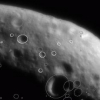Free Online Productivity Tools
i2Speak
i2Symbol
i2OCR
iTex2Img
iWeb2Print
iWeb2Shot
i2Type
iPdf2Split
iPdf2Merge
i2Bopomofo
i2Arabic
i2Style
i2Image
i2PDF
iLatex2Rtf
Sci2ools
ICPR
2004
IEEE
2004
IEEE
Pose Clustering Guided by Short Interpretation Trees
It is common in object recognition algorithms based on viewpoint consistency to find object poses that align many of the object features with features extracted from a search image. Algorithms usually treat these features as having no information other than location. However, in many applications, the features are much more distinctive than this. This distinctiveness can be used to improve recognition with respect to both the search time and the reliability of the recognition. We modify an efficient clustering method for detecting objects using geometry to incorporate short trees that help prune many of the possible matches between object features and image features prior to the more expensive clustering step. The methodology is applied to a problem of computing a spacecraft position with respect to a celestial body by recognizing the configuration of craters visible on the surface.
Computer Vision | Expensive Clustering Step | ICPR 2004 | Object Features | Object Recognition Algorithms |
| Added | 09 Nov 2009 |
| Updated | 09 Nov 2009 |
| Type | Conference |
| Year | 2004 |
| Where | ICPR |
| Authors | Clark F. Olson |
Comments (0)

